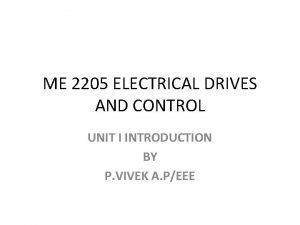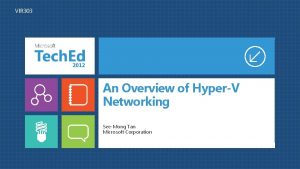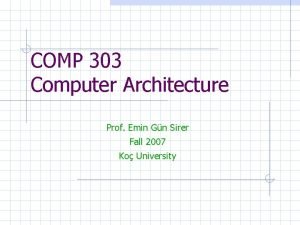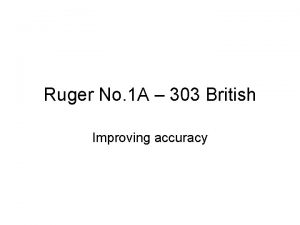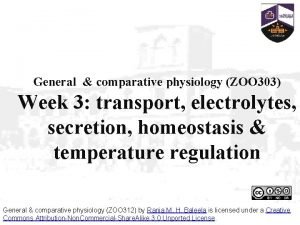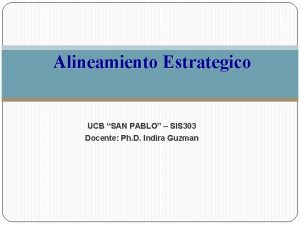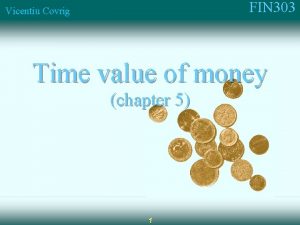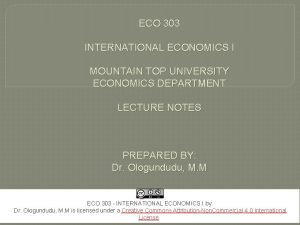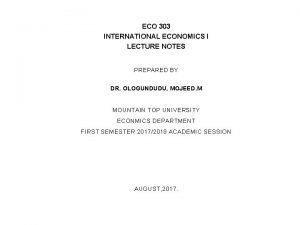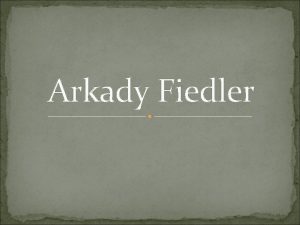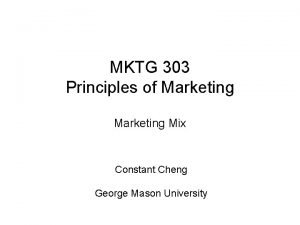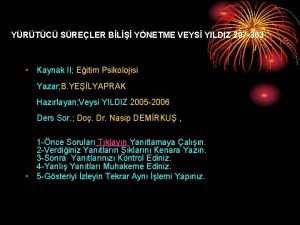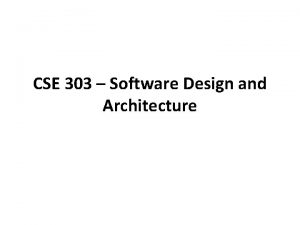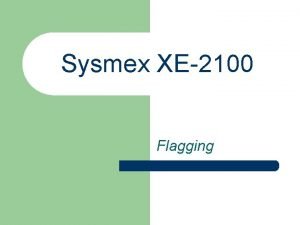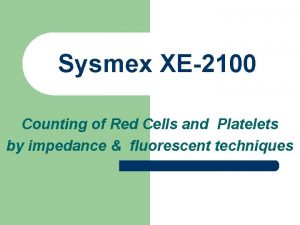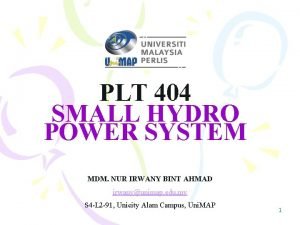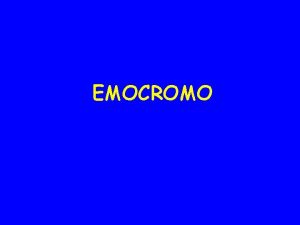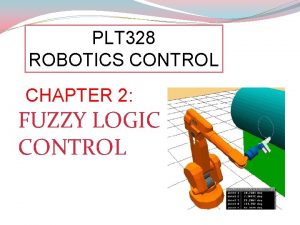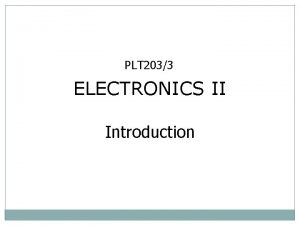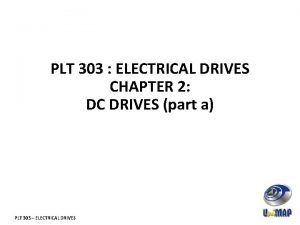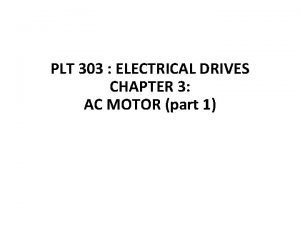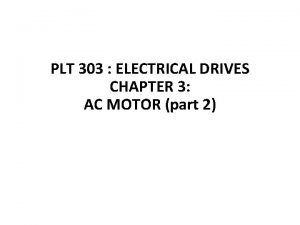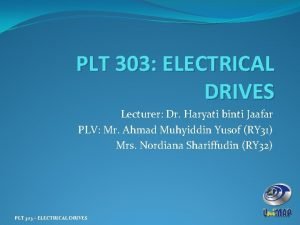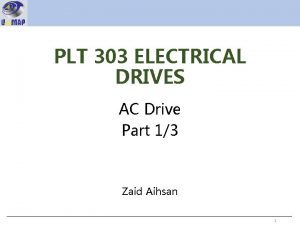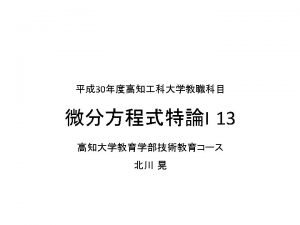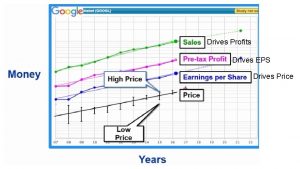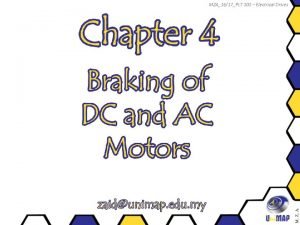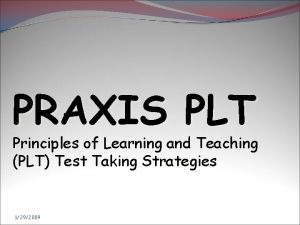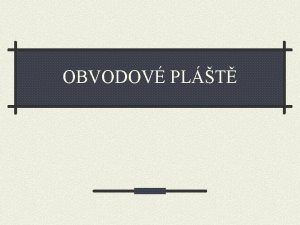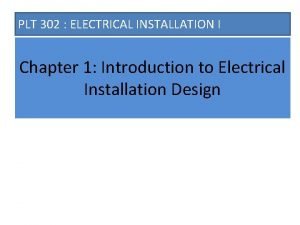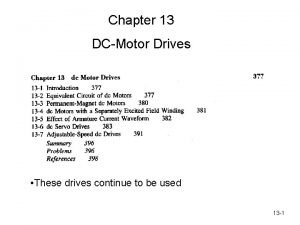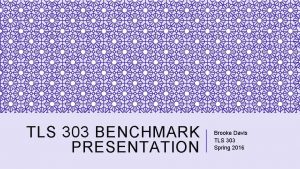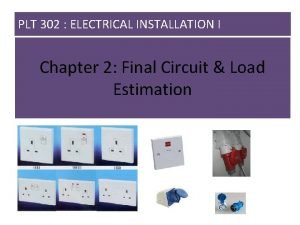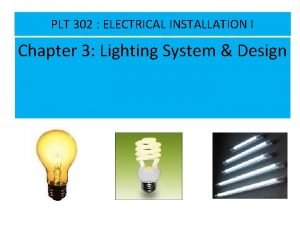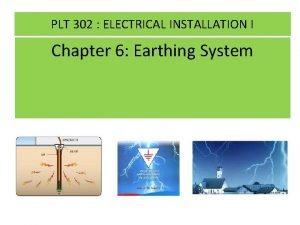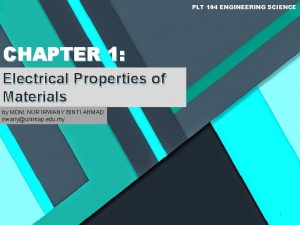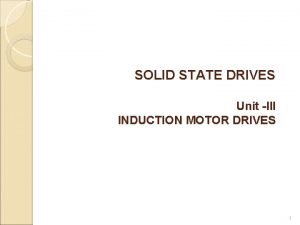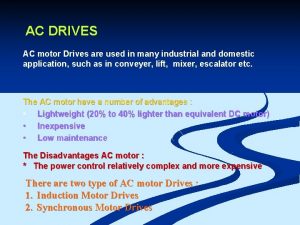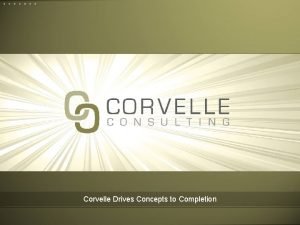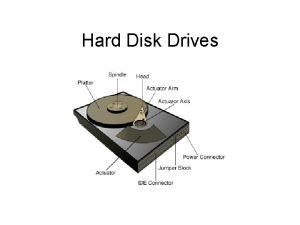PLT 303 Electrical Drives Chapter 1 Introduction To
























- Slides: 24

PLT 303 : Electrical Drives Chapter 1: Introduction To Electrical Drives ZAID AIHSAN 012 - 4064213 JABATAN TEKNOLOGI KEJURUTERAAN ELEKTRIK UNIVERSITI MALAYSIA PERLIS

What Is Electrical Drives? • Drives : Applied for systems that require motion control. – Example : Transportation system, fans, robots, pumps, machine tools etc. • Prime movers : Required in drive system to provide movement or motion. – Example : Diesel engines, petrol engines, hydraulic motors, electric motors etc. • Electrical drives : Drives that use electric motors as prime movers.

How? Ancient Way? • Transporting (e. g. rocks for pyramids) Figure 1

Ancient Way • Lifting (e. g. heavy building objects) Greco-Roman Pentaspastos (“Five-Pulley-Crane”) Figure 2

Machining tools Figure 3 : Old-Timey Human Powered “Wire-Cutting Machine”

Electrical Drives q About 50% of electrical energy used for drives. q Can be either used for fixed speed or variable speed. • 75% - constant speed. • 25% - variable speed.

Advantages of Electrical Drives • Flexible control characteristics. • Available in a wide range of torque, speed and power. • High efficiency, lower noise, low maintenance requirements and cleaner operation. • Electric energy is easy to be transported.

Where are you from?

Where are you from?

Conventional Variable Speed Electrical Drive System Figure 4 • • Bulky Expensive Inflexible Require regular maintenance

Modern Electric Drives (Power Electronic Converters) • • Compact Efficient Cheaper Versatile Figure 5

Power Electronic Converters Figure 6

Power Electronic Converters Figure 7

Multi-disciplinary Nature of Electrical Drive System • Utility interface • Renewable energy • Machine design • Speed sensor less • Machine Theory • • • Non-linear control Real-time control DSP application PFC Speed sensorless Power electronic converters Figure 3

MOTORS ELECTRICAL SOURCE COMPONENTS OF ELECTRICAL DRIVES CONTROL UNIT POWER PROCESSOR / POWER MODULATOR

Components of Electrical Drives • Motors: – Types: • DC Motors : – Wound or permanent magnet • AC Motors : – Induction motors » Squirrel cage, wound motor – Synchronous motors » Wound field, permanent magnet – Brushless DC motors » Required power electronic converters – Stepper motors » Required power electronic converters – Synchronous reluctance motors » Required power electronic converters – Choice of type used depends : • Applications, cost, environmental factors and type of source available.

Components of Electrical Drives • Power Processor / Power Modulator: – To provide a regulated power supply. – Combination of power electronic converters. – Several conversion are possible: AC to DC, DC to AC, DC to DC, and AC to AC. – Advantages of power electronic converters: • More efficient – no losses occur. • Flexible – voltage and current can be shaped by simply controlling switching functions of power converter. • Compact – smaller, compact and higher ratings solid-state power electronic devices are continuously being developed (prices getting cheaper)

Components of Electrical Drives • Control Unit: – Complexity depends on desired drive performance and type of motors used. – Types of main controllers: • Analog – Noisy, inflexible, ideally has infinite bandwidth. • Digital – Immune to noise, configurable, bandwidth is smaller than the analog controller’s (depends on sampling frequency). • DSP/microprocessor – Flexible, lower bandwidth. DSPs perform faster operation than microprocessors (multiplication in single cycle), can perform complex estimations.

Components of Electrical Drives • Source: – Electrical sources / power supplies – provide energy to electrical motors. – Types: • AC - Single-phase or three-phase (high power applications) utility, wind generator – unregulated. • DC - Batteries, fuel cell, photovoltaic – unregulated.

Torque and speed profile – determine ratings of converters and quadrant of operation required. Environment and location. FACTORS AFFECT SELECTION OF DIFFERENT CONFIGURATION OF ELECTRICAL DRIVE SYSTEM Capital and running cost – drive system vary in terms of start-up cost and running cost (maintenance). Space and weight restrictions.

Overview of DC & AC Drives DC Motors AC Motors § Regular maintenance § Heavy § Expensive § Speed limit § Easy control § Decouple control of torque and flux § Less maintenance § Light § Less expensive § High speed § Coupling between torque and flux – variable spatial angle between rotor and stator flux

Overview of DC & AC Drives • Before semiconductor devices were introduced (<1950) – AC motors for fixed speed applications. – DC motors for variable speed applications. • After semiconductor devices were introduced (1950 s) – Variable frequency sources available for AC motors. – AC motors in variable speed applications. • Coupling between flux and torque control. • Application limited to medium performance applications – fans, blowers, compressors – scalar control – High performance applications dominated by DC motors – tractions, elevators, servos, etc.

Overview of DC & AC Drives • After vector control drives were introduced (1980 s) – AC motors used in high performance applications – elevators, tractions, servos. – AC motors favourable than DC motors – however control is complex hence expensive. – Cost of microprocessor/semiconductors decreasing.

 Electrical drives and control
Electrical drives and control 38cfr3.303
38cfr3.303 Vir 303
Vir 303 Emin gun sirer
Emin gun sirer Ruger no 1 accuracy improvement
Ruger no 1 accuracy improvement Zoo 303
Zoo 303 Sis-303
Sis-303 Vicentiu covrig
Vicentiu covrig Explain kravis and linder theory.
Explain kravis and linder theory. Economic 303
Economic 303 Dywizjon 303 klp
Dywizjon 303 klp 6974-6459-0121-7236-303
6974-6459-0121-7236-303 Life orientation grade 7 term 2 exam papers
Life orientation grade 7 term 2 exam papers Uib290
Uib290 Www.coloradoui.gov.myuiemployer
Www.coloradoui.gov.myuiemployer Mktg 303
Mktg 303 Bilgiyi işleme modelinin eğitim ortamında uygulamaları
Bilgiyi işleme modelinin eğitim ortamında uygulamaları Cse 303
Cse 303 Wbc ip message blasts/abn lympho
Wbc ip message blasts/abn lympho Plt abn distribution
Plt abn distribution Plt 404
Plt 404 Striscio di sangue
Striscio di sangue Plt scheme
Plt scheme Plt fuzzy set
Plt fuzzy set Plt electronics
Plt electronics
